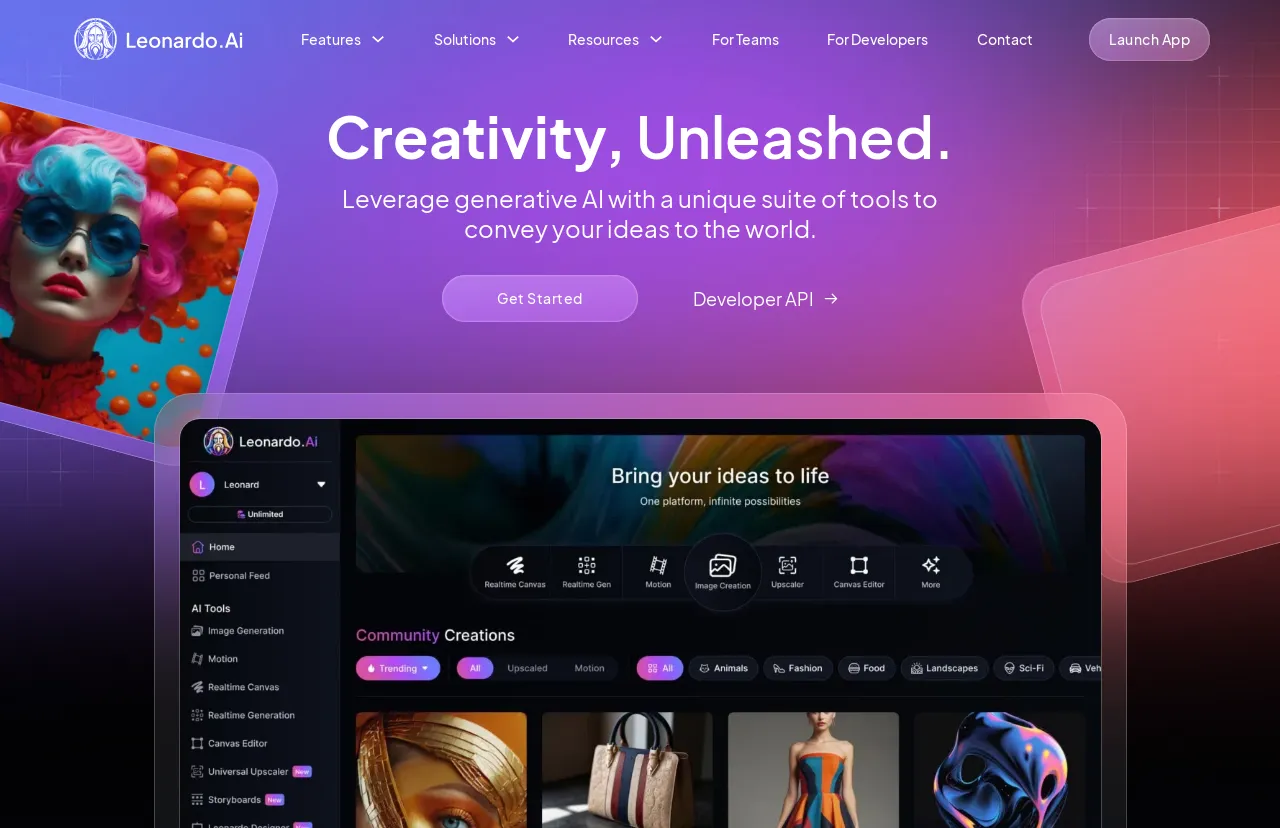Vicuna: An Open-Source Chatbot Impressing GPT-4 with 90%* ChatGPT Quality
Overview
The rapid advancement of large language models (LLMs) has revolutionized chatbot systems, resulting in unprecedented levels of intelligence as seen in OpenAI's ChatGPT. However, despite its impressive performance, the training and architecture details of ChatGPT remain unclear, hindering research and open-source innovation in this field. Inspired by the Meta LLaMA and Stanford Alpaca project, we introduce Vicuna-13B, an open-source chatbot backed by an enhanced dataset and an easy-to-use, scalable infrastructure. By fine-tuning a LLaMA base model on user-shared conversations collected from ShareGPT.com, Vicuna-13B has demonstrated competitive performance compared to other open-source models like Stanford Alpaca. This blog post provides a preliminary evaluation of Vicuna-13B's performance and describes its training and serving infrastructure. We also invite the community to interact with our online demo to test the capabilities of this chatbot.
How Good is Vicuna?
After fine-tuning Vicuna with 70K user-shared ChatGPT conversations, we discover that Vicuna becomes capable of generating more detailed and well-structured answers compared to Alpaca (see examples below), with the quality on par with ChatGPT.
Online Demo
Try the Vicuna-13B demo here!
Training
Vicuna is created by fine-tuning a LLaMA base model using approximately 70K user-shared conversations gathered from ShareGPT.com with public APIs. To ensure data quality, we convert the HTML back to markdown and filter out some inappropriate or low-quality samples. Additionally, we divide lengthy conversations into smaller segments that fit the model's maximum context length.
- Multi-turn conversations: We adjust the training loss to account for multi-turn conversations and compute the fine-tuning loss solely on the chatbot's output.
- Memory Optimizations: To enable Vicuna's understanding of long context, we expand the max context length from 512 in alpaca to 2048, which substantially increases GPU memory requirements. We tackle the memory pressure by utilizing gradient checkpointing and flash attention.
- Cost Reduction via Spot Instance: The 40x larger dataset and 4x sequence length for training poses a considerable challenge in training expenses. We employ SkyPilot managed spot to reduce the cost by leveraging the cheaper spot instances with auto-recovery for preemptions and auto zone switch. This solution slashes costs for training the 7B model from around 140 and the 13B model from around 300.
Serving
We build a serving system that is capable of serving multiple models with distributed workers. It supports flexible plug-in of GPU workers from both on-premise clusters and the cloud. By utilizing a fault-tolerant controller and managed spot feature in SkyPilot, this serving system can work well with cheaper spot instances from multiple clouds to reduce the serving costs. It is currently a lightweight implementation and we are working on integrating more of our latest research into it.
How To Evaluate a Chatbot?
Evaluating AI chatbots is a challenging task, as it requires examining language understanding, reasoning, and context awareness. With AI chatbots becoming more advanced, current open benchmarks may no longer suffice. For instance, the evaluation dataset used in Stanford’s Alpaca, self-instruct, can be effectively answered by SOTA chatbots, making it difficult for humans to discern differences in performance. More limitations include training/test data contamination and the potentially high cost of creating new benchmarks. To tackle these issues, we propose an evaluation framework based on GPT-4 to automate chatbot performance assessment.
Limitations
We have noticed that, similar to other large language models, Vicuna has certain limitations. For instance, it is not good at tasks involving reasoning or mathematics, and it may have limitations in accurately identifying itself or ensuring the factual accuracy of its outputs. Additionally, it has not been sufficiently optimized to guarantee safety or mitigate potential toxicity or bias. To address the safety concerns, we use the OpenAI moderation API to filter out inappropriate user inputs in our online demo. Nonetheless, we anticipate that Vicuna can serve as an open starting point for future research to tackle these limitations.
Release
In our first release, we will share the training, serving, and evaluation code on a GitHub repo: https://github.com/lm-sys/FastChat. We also released the Vicuna-13B model weights. There is no plan to release the dataset. Join our Discord server and follow our Twitter to get the latest updates.
How Good is Vicuna?
After fine-tuning Vicuna with 70K user-shared ChatGPT conversations, we discover that Vicuna becomes capable of generating more detailed and well-structured answers compared to Alpaca (see examples below), with the quality on par with ChatGPT.
Online Demo
Try the Vicuna-13B demo here!
Overview
The rapid advancement of large language models (LLMs) has revolutionized chatbot systems, resulting in unprecedented levels of intelligence as seen in OpenAI's ChatGPT. However, despite its impressive performance, the training and architecture details of ChatGPT remain unclear, hindering research and open-source innovation in this field. Inspired by the Meta LLaMA and Stanford Alpaca project, we introduce Vicuna-13B, an open-source chatbot backed by an enhanced dataset and an easy-to-use, scalable infrastructure. By fine-tuning a LLaMA base model on user-shared conversations collected from ShareGPT.com, Vicuna-13B has demonstrated competitive performance compared to other open-source models like Stanford Alpaca. This blog post provides a preliminary evaluation of Vicuna-13B's performance and describes its training and serving infrastructure. We also invite the community to interact with our online demo to test the capabilities of this chatbot.
Training
Vicuna is created by fine-tuning a LLaMA base model using approximately 70K user-shared conversations gathered from ShareGPT.com with public APIs. To ensure data quality, we convert the HTML back to markdown and filter out some inappropriate or low-quality samples. Additionally, we divide lengthy conversations into smaller segments that fit the model's maximum context length.
Serving
We build a serving system that is capable of serving multiple models with distributed workers. It supports flexible plug-in of GPU workers from both on-premise clusters and the cloud. By utilizing a fault-tolerant controller and managed spot feature in SkyPilot, this serving system can work well with cheaper spot instances from multiple clouds to reduce the serving costs. It is currently a lightweight implementation and we are working on integrating more of our latest research into it.
How To Evaluate a Chatbot?
Evaluating AI chatbots is a challenging task, as it requires examining language understanding, reasoning, and context awareness. With AI chatbots becoming more advanced, current open benchmarks may no longer suffice. For instance, the evaluation dataset used in Stanford’s Alpaca, self-instruct, can be effectively answered by SOTA chatbots, making it difficult for humans to discern differences in performance. More limitations include training/test data contamination and the potentially high cost of creating new benchmarks. To tackle these issues, we propose an evaluation framework based on GPT-4 to automate chatbot performance assessment.
Limitations
We have noticed that, similar to other large language models, Vicuna has certain limitations. For instance, it is not good at tasks involving reasoning or mathematics, and it may have limitations in accurately identifying itself or ensuring the factual accuracy of its outputs. Additionally, it has not been sufficiently optimized to guarantee safety or mitigate potential toxicity or bias. To address the safety concerns, we use the OpenAI moderation API to filter out inappropriate user inputs in our online demo. Nonetheless, we anticipate that Vicuna can serve as an open starting point for future research to tackle these limitations.






